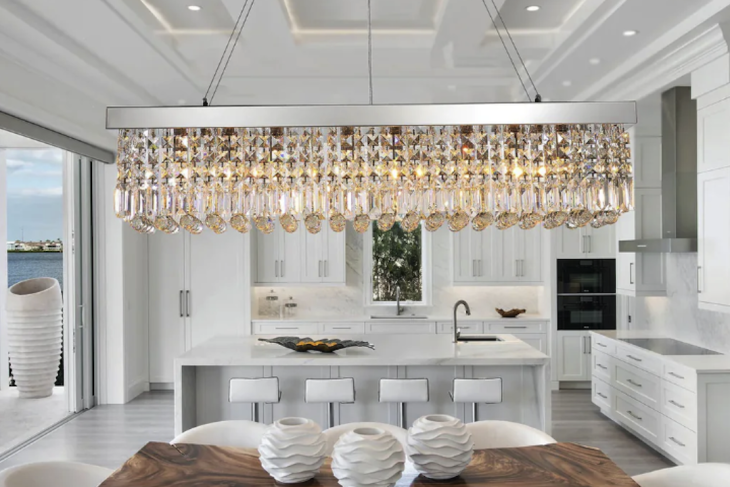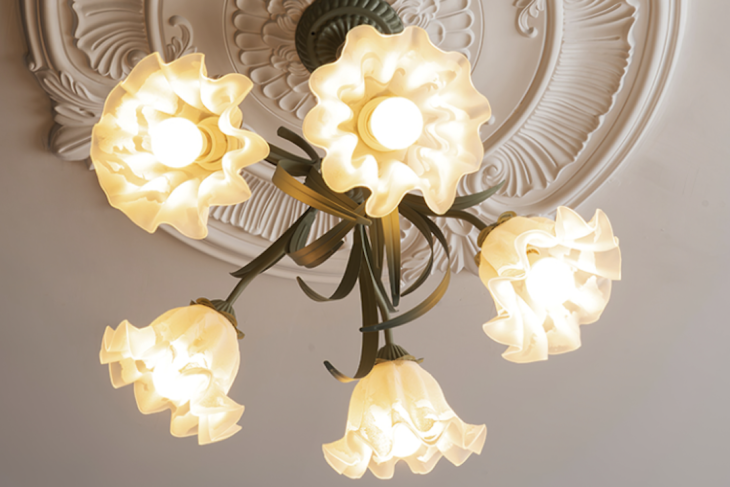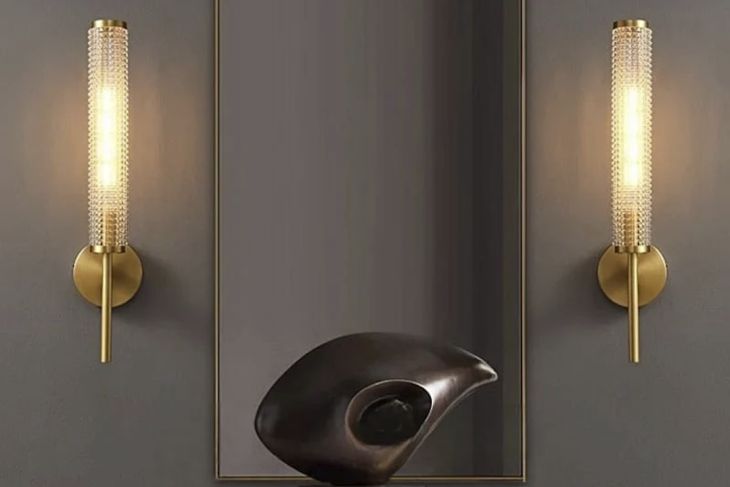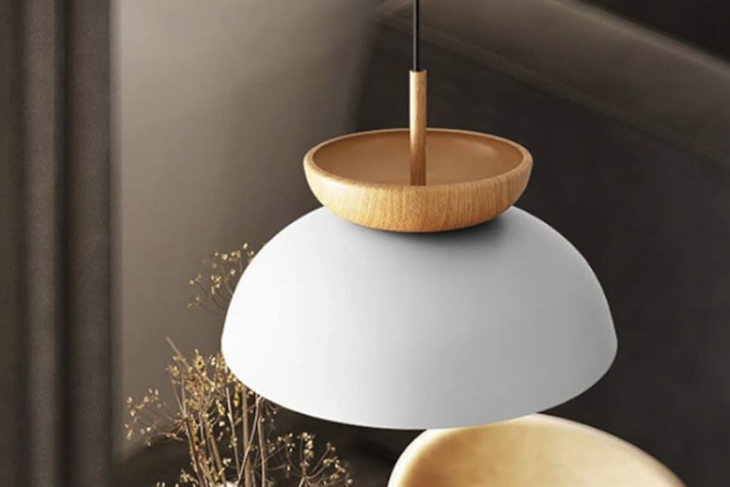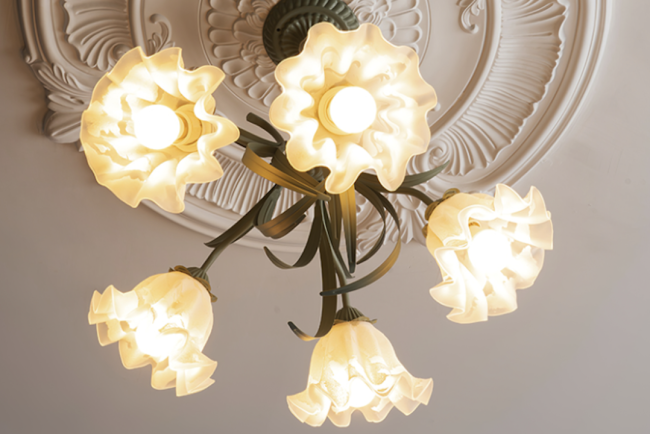
Pendant lighting refers to a type of lighting fixture that is suspended from the ceiling by a cord, chain, or metal rod. It typically consists of a single light source enclosed in a decorative shade or glass globe. Pendant lighting is an essential element in home decor as it not only provides illumination but also adds style and personality to a room.lamolighting.
Lighting plays a crucial role in home decor as it sets the mood, enhances the ambiance, and highlights the design elements of a space. Pendant lighting, in particular, offers several benefits that make it a popular choice among homeowners. Firstly, pendant lighting is versatile and can be used in various rooms and settings. Secondly, it adds a touch of style and elegance to any space. Lastly, pendant lighting improves functionality by providing focused task lighting or general ambient lighting.
Key Takeaways
- Pendant lighting is a type of light fixture that hangs from the ceiling and can be used for both functional and decorative purposes.
- The benefits of pendant lighting include its versatility, ability to add style to a room, and its ability to provide focused lighting.
- When choosing pendant lighting for your home, consider factors such as the size of the room, the style of the fixture, and the type of lighting you need.
- Popular pendant lighting styles include modern, rustic, and industrial, each with its own unique look and feel.
- Creative ways to use pendant lighting in your home decor include using multiple fixtures in a cluster, using them as a statement piece, or using them to highlight a specific area or object in a room.
The Benefits of Pendant Lighting: Functionality and Style
One of the main advantages of pendant lighting is its versatility. Pendant lights come in various shapes, sizes, and styles, making them suitable for any room in the house. They can be used as task lighting above kitchen islands or dining tables, as accent lighting in living rooms or bedrooms, or as decorative lighting in entryways or hallways. The ability to adjust the height of pendant lights also adds to their versatility.
In addition to their functionality, pendant lights can greatly enhance the style of a room. They come in a wide range of designs, from sleek and modern to rustic and industrial. The choice of pendant lighting can help create a specific atmosphere or complement the existing decor. For example, a modern pendant light with clean lines and a minimalist design can add a contemporary touch to a room, while a rustic pendant light with natural materials like wood or metal can create a cozy and warm ambiance.
Furthermore, pendant lighting can improve the functionality of a space by providing focused task lighting or general ambient lighting. Pendant lights with adjustable heights can be positioned to provide direct lighting for tasks such as cooking or reading. They can also be used to create a layered lighting effect by combining them with other light sources, such as recessed lights or floor lamps. This allows for flexibility in lighting options and ensures that the room is well-lit for different activities.
How to Choose the Right Pendant Lighting for Your Home
When choosing pendant lighting for your home, there are several considerations to keep in mind. Firstly, you should consider the style of the room and choose pendant lights that complement the existing decor. For example, if you have a modern or contemporary style, you may opt for pendant lights with clean lines and sleek finishes. On the other hand, if you have a more traditional or rustic style, pendant lights with natural materials like wood or metal may be more suitable.
Secondly, it is important to choose the right size and height for pendant lighting. The size of the pendant light should be proportionate to the size of the room and the furniture it will be placed above. A small pendant light may get lost in a large room, while a large pendant light may overwhelm a small space. Similarly, the height of the pendant light should be adjusted based on the intended use. For example, pendant lights above kitchen islands or dining tables should be hung lower to provide focused task lighting, while pendant lights in entryways or hallways should be hung higher to create a welcoming ambiance.
Lastly, consider the type of lighting you need for the space. Pendant lights come in various types of bulbs, including incandescent, LED, and halogen. Each type of bulb has its own advantages and disadvantages in terms of energy efficiency, brightness, and color temperature. Consider your lighting needs and preferences when choosing the type of bulb for your pendant lights.
Popular Pendant Lighting Styles: Modern, Rustic, and Industrial
| Style | Popularity | Price Range | Materials |
|---|---|---|---|
| Modern | High | 50-500 | Glass, Metal, Plastic |
| Rustic | Medium | 50-300 | Wood, Metal, Rope |
| Industrial | High | 50-500 | Metal, Concrete, Glass |
Pendant lighting comes in a wide range of styles, each with its own unique characteristics. Three popular styles of pendant lighting are modern, rustic, and industrial.
Modern pendant lighting is characterized by clean lines, sleek finishes, and minimalist designs. It often features materials like glass, chrome, or brushed nickel. Modern pendant lights are perfect for contemporary or minimalist interiors and can add a touch of elegance and sophistication to a room.
Rustic pendant lighting embraces natural materials like wood, metal, and rope. It often has a distressed or weathered finish to create a vintage or farmhouse look. Rustic pendant lights are ideal for creating a cozy and warm ambiance in spaces like living rooms or dining areas.
Industrial pendant lighting is inspired by the look of factories and warehouses. It typically features materials like metal, concrete, or exposed bulbs. Industrial pendant lights have a raw and edgy aesthetic that adds a touch of urban chic to any space.
Examples of modern pendant lighting include sleek glass globe pendants or geometric metal pendants. Rustic pendant lighting can include wooden bead pendants or metal cage pendants. Industrial pendant lighting can feature metal dome pendants or vintage-inspired Edison bulb pendants.
Creative Ways to Use Pendant Lighting in Your Home Decor
Pendant lighting can be used in creative ways to enhance the overall design and ambiance of a room. One way to use pendant lighting is as a focal point in a space. Choose a statement pendant light with an eye-catching design or unique shape and hang it in a prominent place, such as above a dining table or in the center of a living room. This will draw attention and become a conversation piece in the room.
Another creative way to use pendant lighting is to create ambiance. Pendant lights with dimmable bulbs or adjustable heights can be used to create different moods in a space. For example, lower the pendant lights above a dining table for an intimate dinner setting, or raise them for a brighter and more energetic atmosphere. Pendant lights with colored or patterned shades can also add a playful and whimsical touch to a room.
Lastly, pendant lighting can be used in unexpected places to add a unique and unexpected element to the decor. For example, instead of using traditional bedside table lamps, hang pendant lights on either side of the bed for a modern and unconventional look. Pendant lights can also be used in bathrooms, closets, or even outdoor spaces to provide both functional and decorative lighting.
Pendant Lighting for Different Rooms: Living Room, Kitchen, Bedroom, and More

Pendant lighting can be used in various rooms throughout the house to enhance the overall design and functionality. In the living room, pendant lights can be used as a focal point above a coffee table or as accent lighting to highlight artwork or architectural features. They can also be used to create a cozy reading nook by hanging pendant lights above a comfortable chair or sofa.
In the kitchen, pendant lighting is commonly used above kitchen islands or dining tables. Pendant lights with adjustable heights can provide focused task lighting for cooking or food preparation. They can also add a touch of style and elegance to the kitchen decor.
In the bedroom, pendant lights can be used as bedside lighting instead of traditional table lamps. Hanging pendant lights on either side of the bed frees up space on the bedside tables and creates a clean and minimalist look. Pendant lights with dimmable bulbs are ideal for creating a relaxing and soothing ambiance in the bedroom.
Pendant lighting can also be used in other rooms such as entryways, hallways, home offices, or even outdoor spaces. In entryways or hallways, pendant lights can create a welcoming and inviting atmosphere. In home offices, pendant lights can provide focused task lighting for work or study areas. In outdoor spaces like patios or pergolas, pendant lights can add both functional and decorative lighting for outdoor entertaining.
When choosing pendant lighting for specific rooms, consider the size and height of the room, the intended use of the pendant lights, and the existing decor. For example, in a large living room with high ceilings, choose larger pendant lights with longer cords or chains to fill the space. In a small bedroom with low ceilings, opt for smaller pendant lights with shorter cords or chains to avoid overwhelming the room.
DIY Pendant Lighting: How to Make Your Own Unique Fixtures
Making your own pendant lighting can be a fun and creative way to add a unique and personal touch to your home decor. DIY pendant lighting allows you to customize the design, materials, and finishes to match your style and preferences. It also gives you the opportunity to repurpose or upcycle materials and objects that you already have.
To make your own pendant lighting, you will need a few basic materials and tools. The materials needed will depend on the design and style of pendant lighting you want to create. Common materials include lamp cord or chain, a socket or bulb holder, a shade or globe, and electrical wiring components. You may also need additional materials like beads, crystals, or decorative elements to embellish your pendant lights.
The tools needed for DIY pendant lighting include wire cutters, pliers, a screwdriver, and a drill. These tools will be used to cut and shape the materials, assemble the pendant light fixture, and install it in your desired location. It is important to follow safety guidelines when working with electrical components and wiring.
Step-by-step instructions for making pendant lighting will vary depending on the specific design and materials used. However, a general guide would involve assembling the socket or bulb holder, attaching the shade or globe, wiring the electrical components, and installing the pendant light fixture in your desired location. It is recommended to consult online tutorials or DIY guides for detailed instructions and tips.
How to Install Pendant Lighting: A Step-by-Step Guide
Installing pendant lighting in your home can be a relatively simple process if you have the right tools and follow the proper steps. Before starting the installation, make sure to turn off the power to the area where you will be working. This can be done by switching off the circuit breaker or removing the fuse for that particular area.
The tools needed for pendant lighting installation include a ladder or step stool, a screwdriver, wire strippers, wire connectors, and a voltage tester. It is important to use the correct tools and follow safety guidelines to avoid accidents or electrical hazards.
The first step in installing pendant lighting is to remove the existing light fixture, if there is one. This involves disconnecting the wires and removing the mounting bracket or base. Once the old fixture is removed, you can begin installing the pendant light fixture.
Start by attaching the mounting bracket or base to the electrical box in the ceiling using screws. Make sure it is securely fastened. Next, connect the wires from the pendant light fixture to the corresponding wires in the ceiling using wire connectors. Match the black wire from the fixture to the black wire in the ceiling, and do the same for the white wires and any additional wires like ground wires.
After connecting the wires, tuck them into the electrical box and attach the pendant light fixture to the mounting bracket or base using screws. Make sure it is level and secure. Finally, install any additional components like shades or globes according to the manufacturer’s instructions.
Once everything is installed, turn on the power and test the pendant lights to ensure they are working properly. Use a voltage tester to check for any live wires before touching them. If there are any issues or problems with the installation, consult a professional electrician for assistance.
Maintenance and Cleaning Tips for Pendant Lighting
Proper maintenance and cleaning of pendant lighting fixtures are essential to ensure their longevity and performance. Regular cleaning helps to remove dust, dirt, and grime that can accumulate on the surface of the fixtures and affect their appearance and functionality.
To clean pendant lighting fixtures, start by turning off the power to the area and allowing the bulbs to cool down. Remove any shades or globes and gently wipe them with a soft cloth or sponge dampened with a mild cleaning solution. Avoid using abrasive cleaners or harsh chemicals that can damage the finish or materials of the fixtures.
For metal pendant lighting fixtures, use a metal cleaner or polish to remove tarnish or fingerprints. Apply the cleaner or polish according to the manufacturer’s instructions and buff the surface with a soft cloth to restore its shine. For glass shades or globes, use a glass cleaner or a mixture of vinegar and water to remove any smudges or streaks.
In addition to regular cleaning, it is important to maintain pendant lighting fixtures by checking for any loose screws or connections. Tighten any loose screws or nuts using a screwdriver or pliers. Inspect the wiring and electrical components for any signs of wear or damage, and replace them if necessary.
Common problems with pendant lighting fixtures include flickering lights, dimming lights, or bulbs that burn out frequently. These issues can be caused by loose connections, faulty wiring, or incompatible bulbs. If you are experiencing any of these problems, consult a professional electrician for assistance.
Transform Your Home Decor with Pendant Lighting
Pendant lighting is an essential element in home decor that not only provides illumination but also adds style and personality to a room. Its versatility, ability to enhance the style of a room, and improve functionality make it a popular choice among homeowners.
When choosing pendant lighting for your home, consider the style of the room, the size and height of the pendant lights, and the type of lighting needed. There are various styles of pendant lighting to choose from, including modern, rustic, and industrial. Pendant lighting can be used in creative ways to create a focal point, enhance ambiance, or add a unique touch to the decor.
Whether you choose to purchase pendant lighting or make your own DIY fixtures, proper installation, maintenance, and cleaning are important to ensure their longevity and performance. Follow the proper steps and safety guidelines when installing pendant lighting, and regularly clean and maintain the fixtures to keep them looking their best.
In conclusion, pendant lighting has the power to transform your home decor by providing both functional and stylish lighting solutions. Consider incorporating pendant lighting into your home to create a warm and inviting atmosphere that reflects your personal style.


